Welcome back for the second half of our Fall 2023 Horror Roundtable! I’m so thrilled to spotlight these eight fantastic authors and editors as they discuss their fabulous new books!
And now I’m so pleased to let them take it away!
I know it’s a perennial question, but I’ll ask it anyhow: what draws you to horror? Also, do you remember your first experience with the genre growing up?
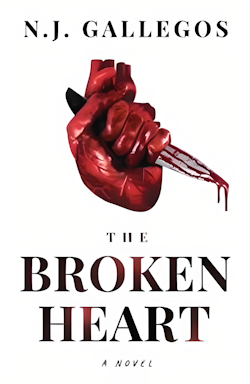 N.J. GALLEGOS: There’s something magical to me about facing your fears through the horror genre, whether that means fear of death, losing the ones you love, or the scary things that go bump in the night. It’s always made me feel less scared and alone, oddly enough. My parents divorced when I was young and my mom worked a lot to support us, leaving me to my own devices quite a bit. Horror was there for me, keeping me company. It’s comforting to me.
N.J. GALLEGOS: There’s something magical to me about facing your fears through the horror genre, whether that means fear of death, losing the ones you love, or the scary things that go bump in the night. It’s always made me feel less scared and alone, oddly enough. My parents divorced when I was young and my mom worked a lot to support us, leaving me to my own devices quite a bit. Horror was there for me, keeping me company. It’s comforting to me.
As long as I can remember, I’ve been a horror fan. My mother is a massive horror fiend and shared that love with me early on. I have a distinct memory of watching Alien with her for the first time and everything about the movie captivated me: a woman protagonist who is a total badass (that goes back for the cat; a very big deal to 5-year-old me) fighting a Xenomorph which still ranks as one of my scariest monsters. I grew up in the era of VHS rentals and at one point, we’d watched every single movie in the horror section! As I started reading, I would mow through the YA stuff (Goosebumps, Animorphs, etc) in about an hour and then was nagging my mom for more books. So, she tossed Stephen King’s The Stand at me and said: Try reading this in an hour. Took me a bit longer than that!
SHANE HAWK: If we’re restricting ourselves to literature, what really draws me to Horror is the way in which we can confront our own fears—or step into someone else’s shoes and experience their fears—safely and exist in some intangible liminal space for a little while before we must go back to the real world, our day jobs, etc. I enjoy the thrill, the mystery, the what-if of the dark. Realistic horror freaks me out just as much as supernatural horror does, and I love that I can visit those wispy, incorporeal playgrounds to reflect on how I would react, what I would do if I were ever in a similar situation. I think a lot of us who love escaping into fiction cherish stories in which we get to have a little fun and be vicarious, even for a short journey.
One of my first experiences with the genre was a third-grade reading project whereby the teacher allowed us to choose any book we wanted to read and we had to make some type of artistic expression from that book, whether it was a painting, drawing, model, etc. I chose R.L. Stine’s Revenge of the Lawn Gnomes, and I can still remember the cover with the plastic pink flamingos and the mischievous-looking gnomes in red hats. As a third grader, the story spooked me a bit, and it reminded me of the stories of the Little People from my tribe. Arapaho stories about the Little People are scary as they are depicted as entirely malevolent and cannibalistic rather than trickster-ish troublemakers according to other tribes. My dad helped me create my artistic component of the project by using a Tupperware bowl to form a papier-mâché gnome mask. We painted it together. I’m pretty sure I was the only kid who chose a scary book for the project.
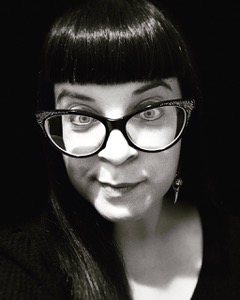 ANGELA SYLVAINE: I have a theory about that. Being North Dakotan and Norwegian, I was raised to be extremely polite and smile always, no matter what, so I think horror allowed me to explore darker emotions that I couldn’t necessarily display on the surface. My first memory of horror was the movie Cat’s Eye. I would have been about seven, similar in age to Drew Barrymore in the movie, and I clearly remember seeing the little breath-sucking troll peeking through the door to my room. And I had no cat to save me!
ANGELA SYLVAINE: I have a theory about that. Being North Dakotan and Norwegian, I was raised to be extremely polite and smile always, no matter what, so I think horror allowed me to explore darker emotions that I couldn’t necessarily display on the surface. My first memory of horror was the movie Cat’s Eye. I would have been about seven, similar in age to Drew Barrymore in the movie, and I clearly remember seeing the little breath-sucking troll peeking through the door to my room. And I had no cat to save me!
JESSICA MCHUGH: I like the descriptive nature of horror, the icky sticky sights and sounds, the rusty earthen stenches and skin-bristling textures. All the revulsion, all the beauty. I love dissecting people’s pasts and motivations too, and for me, horror is the best place to unravel those messy tales. It’s just so much fun.
I consumed horror from a very young age, so it’s hard for me to pinpoint the first experience, but I will say that I read a lot of generic spooky campfire stories, folk tales, and urban legend books when I was little. Paired with Scary Stories to Tell in Dark, the inherent darkness of 80s kids movies like The Last Unicorn, Return to Oz, and The Black Cauldron, and having two older brothers who were already deep into horror films, I’ve always been comforted by all things creepy. I started reading Stephen King novels in late elementary school and was obsessed with RL Stine’s Fear Street series throughout middle school. Horror has just always been there for me, thank goodness.
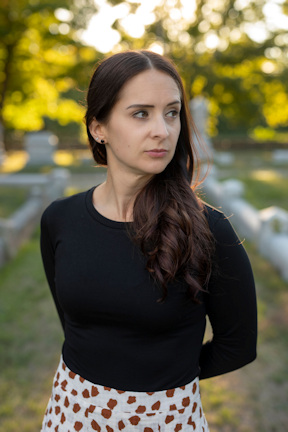 CHRISTA CARMEN: What draws me to horror is the ability for horror writers and filmmakers to examine a difficult topic—be it mental illness, addiction, trauma, loss, guilt, regret, shame, etc.—through the lens of something even more terrible, more disturbing, and more soul-splitting, resulting in a piece of art that—in addition to horrifying the reader or viewer—can entertain, teach, promote empathy, and even heal. Not too many other genres, if any, can claim that.
CHRISTA CARMEN: What draws me to horror is the ability for horror writers and filmmakers to examine a difficult topic—be it mental illness, addiction, trauma, loss, guilt, regret, shame, etc.—through the lens of something even more terrible, more disturbing, and more soul-splitting, resulting in a piece of art that—in addition to horrifying the reader or viewer—can entertain, teach, promote empathy, and even heal. Not too many other genres, if any, can claim that.
Regarding my first experience with the genre growing up, some of the first books I truly adored were the works of James and Deborah Howe, particularly, the Bunnicula series, as well as the Goosebumps and Fear Street books by R.L. Stine. Though, I had a rather bizarre experience when I was in third grade… I went to a friend’s birthday party, and there was talk of watching a few scary movies, but when the movies in question were revealed, they were Leprechaun and Nightmare on Elm Street 3: Dream Warriors, far from appropriate fare for a group of nine-year-olds. I walked around in an Elm Street-esque, sleepless daze for about a week before the memories of those terror-inducing films began to lessen.
I steered clear of horror films for about four years, then gave the genre another chance with Halloween when I was about thirteen. Though I was terrified over the possibility of Michael Myers climbing the trellis into my bedroom (despite my house not even having a trellis), something about this experience must have struck a chord, because from that moment on, I was drawn to horror.
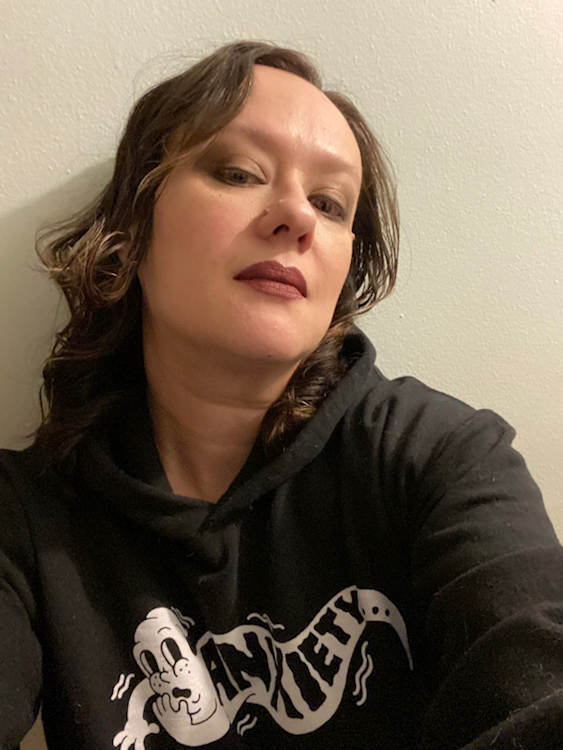 J.A.W. MCCARTHY: Horror is a mirror of our current times and ourselves. I’ve always been an anxious and fearful person, and writing horror allows me to safely explore those fears. My parents never limited my reading and viewing, so I was exposed to the genre early on. I saw movies like Poltergeist and read books like Carrie too young, probably. I was obsessed with the Christopher Pike books, and read a ton of Zilpha Keatley Snyder as a kid.
J.A.W. MCCARTHY: Horror is a mirror of our current times and ourselves. I’ve always been an anxious and fearful person, and writing horror allows me to safely explore those fears. My parents never limited my reading and viewing, so I was exposed to the genre early on. I saw movies like Poltergeist and read books like Carrie too young, probably. I was obsessed with the Christopher Pike books, and read a ton of Zilpha Keatley Snyder as a kid.
EDEN ROYCE: Several things draw me to horror: the tension, the anticipation, and the eventual resolution of those feelings, sometimes in one decisive swoop. It’s a way of dealing with the horrors and aggressions of the world at large, similar to the way some people embrace gallows humor.
One of my first experiences with horror was the book The Gashleycrumb Tinies by Edward Gorey. It’s an illustrated book of ABCs, with a decidedly morbid bent. As a young kid, I found a copy of it at the library and my mom flipped through it. Because of the content, I was afraid she wouldn’t let me check it out. But she just chuckled and set it on the circulation desk with the rest of our book haul for the day. She’s a horror lover as well, so I think she just thought it was a good way to prepare me for the wider world out there.
JAN STINCHCOMB: I like to ponder bad people doing bad things. Good people make me nervous. As a child I was always drawn to ghosts and witches. My first exposure to horror in popular culture was probably Scooby-Doo, but one cannot underestimate the power of the Bible. I remember my older sister explaining that the devil was once an angel, and even though I was a little kid, I felt like I somehow already knew this. Of course he was an angel, I thought. That makes sense. Even the devil has an origin story.
What are your hopes for the future of the horror genre?
N.J. GALLEGOS: It’s already happening but I want the horror genre to be more visible and respected. I feel like previously horror was considered low brow, full of cheap tricks and thrills. Almost the literary equivalent of sugary candy compared to foie gras of contemporary fiction, thriller, etc.
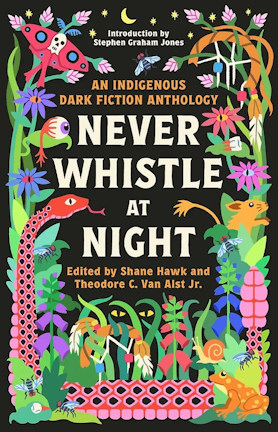 SHANE HAWK: The future of Horror looks bright despite our obsession with the dark and macabre. I see far more stories and books being published by people whose community has been historically marginalized, and in effect, creating a rich diversity of style, voice, and experience within that community that then helps readers avoid making singular, monolithic assumptions and takeaways. I hope it continues to challenge people’s views by tackling all sorts of relevant social issues of the past, present, and future in innovative and alluring ways. I see far more people flocking to it as we break down the barriers and make people understand that it’s not all just the classic creatures and blood and guts. There’s a lot more to it, and more people will continue to see that and spread the word. We will thrive.
SHANE HAWK: The future of Horror looks bright despite our obsession with the dark and macabre. I see far more stories and books being published by people whose community has been historically marginalized, and in effect, creating a rich diversity of style, voice, and experience within that community that then helps readers avoid making singular, monolithic assumptions and takeaways. I hope it continues to challenge people’s views by tackling all sorts of relevant social issues of the past, present, and future in innovative and alluring ways. I see far more people flocking to it as we break down the barriers and make people understand that it’s not all just the classic creatures and blood and guts. There’s a lot more to it, and more people will continue to see that and spread the word. We will thrive.
ANGELA SYLVAINE: My hope for the horror genre is that we continue to see the diversity grow. When I was young, I read white, male authors because they were all that I knew of and the most readily available to me. While those stores were great, there are so many other stories to be told, and I am really glad to see that happening today. I love Stephen King, but I hope horror readers broaden their horizons and continue to discover the wide range of talent that is thriving in the genre.
JESSICA MCHUGH: More unhinged, super weird, unlikeable, unredeemable, and diverse characters / situations. Gutsy horror, unapologetic horror, the kind of horror that makes me even more excited to find out that the author of that revolting mindfuck of a novel is the kindest, most caring person in the world.
CHRISTA CARMEN: More challenging and subverting of stereotypical tropes and more diverse stories and voices! Also, more women in horror getting deals for film and television adaptations based on their work!
J.A.W. MCCARTHY: I’ve been happy to see a real effort towards inclusion in recent years, at least in the indie horror community. Readers have always been interested in works from BIPOC and LGBTQ+ authors, and those authors are finally getting a spotlight and more opportunities to publish. I want to see that continue. There are a lot of diverse voices out there and even more stories. The literary world is a better, more exciting place when it includes a wide variety of voices.
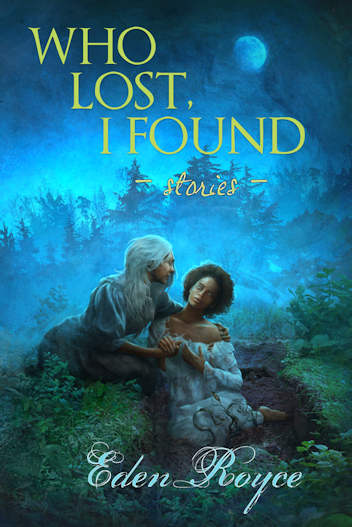 EDEN ROYCE: My hopes are that people who love horror read it more widely: various authors, themes, and sub-genres. I hope the horror community expands, becoming more accepting and more open, with less gatekeeping as to what qualifies as horror. I have people tell me they don’t like horror at all, but they like my work. Horror isn’t all slashers chasing teens through the woods. The horror genre is nuanced and can have subtleties that draw you in with beauty or strangeness, only to reveal something you don’t realize is unsettling until after you’ve put the book down.
EDEN ROYCE: My hopes are that people who love horror read it more widely: various authors, themes, and sub-genres. I hope the horror community expands, becoming more accepting and more open, with less gatekeeping as to what qualifies as horror. I have people tell me they don’t like horror at all, but they like my work. Horror isn’t all slashers chasing teens through the woods. The horror genre is nuanced and can have subtleties that draw you in with beauty or strangeness, only to reveal something you don’t realize is unsettling until after you’ve put the book down.
There is a deeply-rooted belief out there that horror is a “low” form of entertainment, so I’d love for consumers of media to recognize horror can be as rich and layered and resonant as any other genre out there.
JAN STINCHCOMB: I love horror and I want to see it flourish. I want new voices, all the voices. For years the general public has associated horror with gore, but it is so much more than that. I want to see more readers give horror a chance, and I will keep blending genres in my own work regardless of the constraints of mainstream publishing. That said, I must acknowledge the independent presses out there supporting weird and challenging books: JournalStone, Clash, Apocalypse Party, Black Lawrence, Raw Dog Screaming, Unnerving.
What upcoming projects are you currently working on?
N.J. GALLEGOS: Currently working on my second novel which follows a neurologist who invents implantable inhibiting chips that stop migraines at the source, but the side effects could be… murder.
I’ve also been kicking around ideas for a The Broken Heart sequel but those currently reside in my brain.
SHANE HAWK: I’m working on my debut novel that revolves around an Indigenous punk band, heavy anarchistic music, government ops, and shapeshifters. I’m also working with an established producer on a feature script for a global theatrical release and—fingers crossed—he will help me sell it to a major studio and get it made in the next few years. Keith Rosson also just asked me to write a story for a charity anthology due next year, and I’m excited for that as well!
ANGELA SYLVAINE: I’m finishing up my debut short story collection, The Dead Spot: Stories of Lost Girls, which will be released in May of 2024, and I’m expanding a previous novella, Chopping Spree, which will be rereleased later in 2024 with new material. I’ve also begun working on the sequel to Frost Bite, which will come out in 2025.
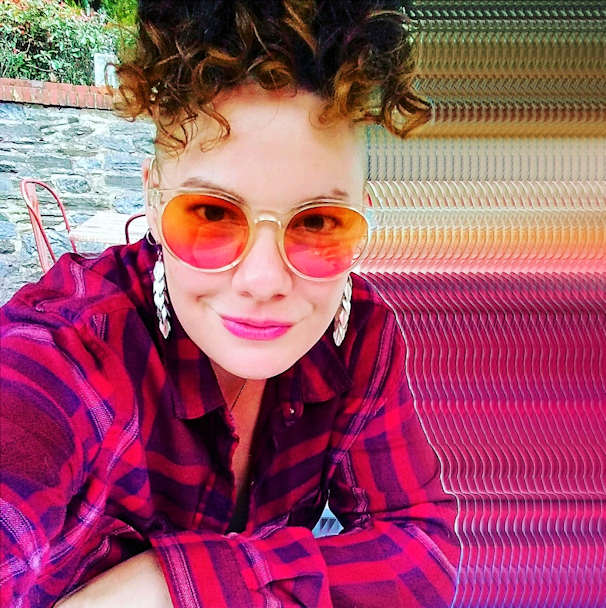 JESSICA MCHUGH: I’m working on an erotic horror blackout poetry collection called Feast made from Wuthering Heights. And while it won’t be as physically demanding as The Quiet Ways I Destroy You, it’s still a massive challenge, as I’m writing it in a play format, with all these poems stitched into a very clear narrative and cast of characters. Even the stage directions will be blackout poems. It’s been maddening at times, but it’s also been incredibly fun to develop.
JESSICA MCHUGH: I’m working on an erotic horror blackout poetry collection called Feast made from Wuthering Heights. And while it won’t be as physically demanding as The Quiet Ways I Destroy You, it’s still a massive challenge, as I’m writing it in a play format, with all these poems stitched into a very clear narrative and cast of characters. Even the stage directions will be blackout poems. It’s been maddening at times, but it’s also been incredibly fun to develop.
I’m also writing the 3rd and final book in the Gardening Guidebooks Trilogy, coming out from Ghoulish Books in fall 2024. Following the 1950s madhouse horror of Rabbits in the Garden and the 1970s cult horror of Hares in the Hedgerow, I think the 1980s glam metal horror of Witches in the Warren is going to make fans of this bonkers series very happy with how things wrap up for Avery Norton and her fiery family.
CHRISTA CARMEN: My second novel with Thomas & Mercer, Beneath the Poet’s House, will be released in the fall of 2024, and I’m so, so excited about this book. Many of the characters are inspired by historical figures close to my heart, and I can’t wait to be able to tell readers more about this project. Soon… very soon.
Additionally, I’ll have a short story, “Until the Moss had Reached Our Lips,” in a Weird House Press anthology, 13 Possessions, that will be available for preorder shortly, and a story entitled, “Guess How Much I Love You?” in Why Didn’t You Just Leave?, edited by Nadia Bulkin and Julia Rios and published by Cursed Morsels Press, though that one won’t be out until 2024. I have a few more short stories poised for publication with different anthologies that I can’t announce quite yet, and I’m hoping to release my first children’s picture book in the near future as well!
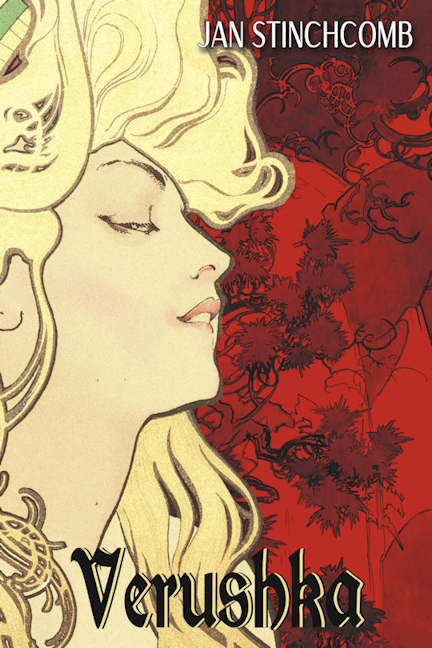 J.A.W. MCCARTHY: I’m at an exciting point in my career where I’m ready to finally tackle my longest work yet, a novel. I can’t reveal much at this point, but it’s a body horror story about the fallibility of memory, desire through consumption, and the cyclical nature of everything.
J.A.W. MCCARTHY: I’m at an exciting point in my career where I’m ready to finally tackle my longest work yet, a novel. I can’t reveal much at this point, but it’s a body horror story about the fallibility of memory, desire through consumption, and the cyclical nature of everything.
EDEN ROYCE: I’ve had a few manuscripts accepted recently that I’m looking forward to seeing out in the world. One has been announced already: an adult horror novella with Raw Dog Screaming Press titled Hollow Tongue. And two that will be announced soon: an adult Southern Gothic fantasy novella and a YA Southern Gothic horror novel – so stay tuned for news on those!
JAN STINCHCOMB: I’m working on a project that combines fairy tale and noir but I can’t say much about it yet. I’m always working on various short stories––they pop up like mushrooms in my life. I tend to believe that it’s good to have several projects going at once, though the novel has a way of rising up and knocking everything else aside.
So many thanks to our amazing featured authors this month! Please pick up copies of their books; they’re very much worth your time!
Happy reading!
